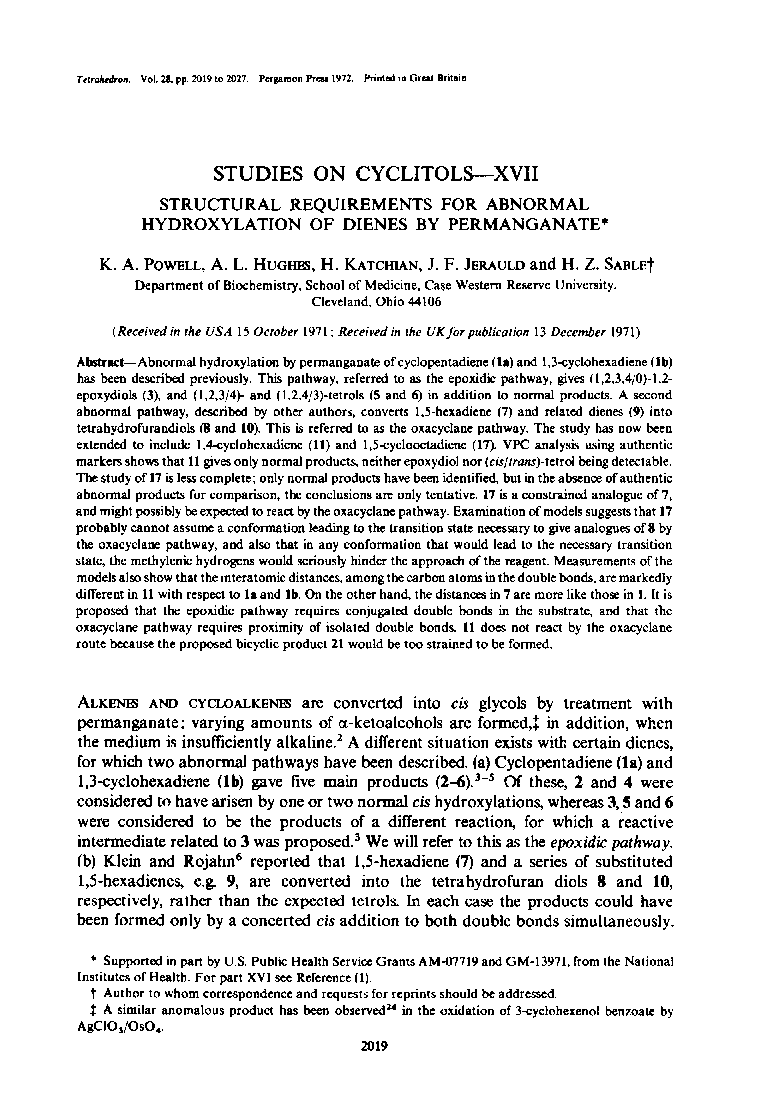| Article ID | Journal | Published Year | Pages | File Type |
|---|---|---|---|---|
| 5255165 | Tetrahedron | 2019 | 9 Pages |
Abstract
Abnormal hydroxylation by permanganate of cyclopentadiene (1a) and 1,3-cyclohexadiene (1b) has been described previously. This pathway, referred to as the epoxidic pathway, gives (1,2,3,4/0)-1,2-epoxydiols (3), and (1,2,3/4)- and (1,2,4/3)-tetrols (5 and 6) in addition to normal products. A second abnormal pathway, described by other authors, converts 1,5-hexadiene (7) and related dienes (9) into tetrahydrofurandiols (8 and 10). This is referred to as the oxacyclane pathway. The study has now been extended to include 1,4-cyclohexadiene (11) and 1,5-cyclooctadiene (17). VPC analysis using authentic markers shows that 11 gives only normal products, neither epoxydiol nor (cis/trans)-tetrol being detectable. The study of 17 is less complete; only normal products have been identified, but in the absence of authentic abnormal products for comparison, the conclusions are only tentative. 17 is a constrained analogue of 7, and might possibly be expected to react by the oxacyclane pathway. Examination of models suggests that 17 probably cannot assume a conformation leading to the transition state necessary to give analogues of 8 by the oxacyclane pathway, and also that in any conformation that would lead to the necessary transition state, the methylenic hydrogens would seriously hinder the approach of the reagent. Measurements of the models also show that the interatomic distances, among the carbon atoms in the double bonds, are markedly different in 11 with respect to 1a and 1b. On the other hand, the distances in 7 are more like those in 1. It is proposed that the epoxidic pathway requires conjugated double bonds in the substrate, and that the oxacyclane pathway requires proximity of isolated double bonds. 11 does not react by the oxacyclane route because the proposed bicyclic product 21 would be too strained to be formed.
Related Topics
Physical Sciences and Engineering
Chemistry
Organic Chemistry
Authors
K.A. Powell, A.L. Hughes, H. Katchian, J.F. Jerauld, H.Z. Sable,
